Introduction
The heroin epidemic is a pervasive element of the larger opioid crisis that has dramatically altered the social, economic, and health landscapes of communities across the United States. The evolution of this epidemic is marked by complex interactions of pharmaceutical practices, socioeconomic factors, and evolving patterns of illicit drug use. Understanding these interactions is crucial for comprehensively addressing the heroin epidemic’s multifaceted challenges.
Genesis of the Opioid Epidemic
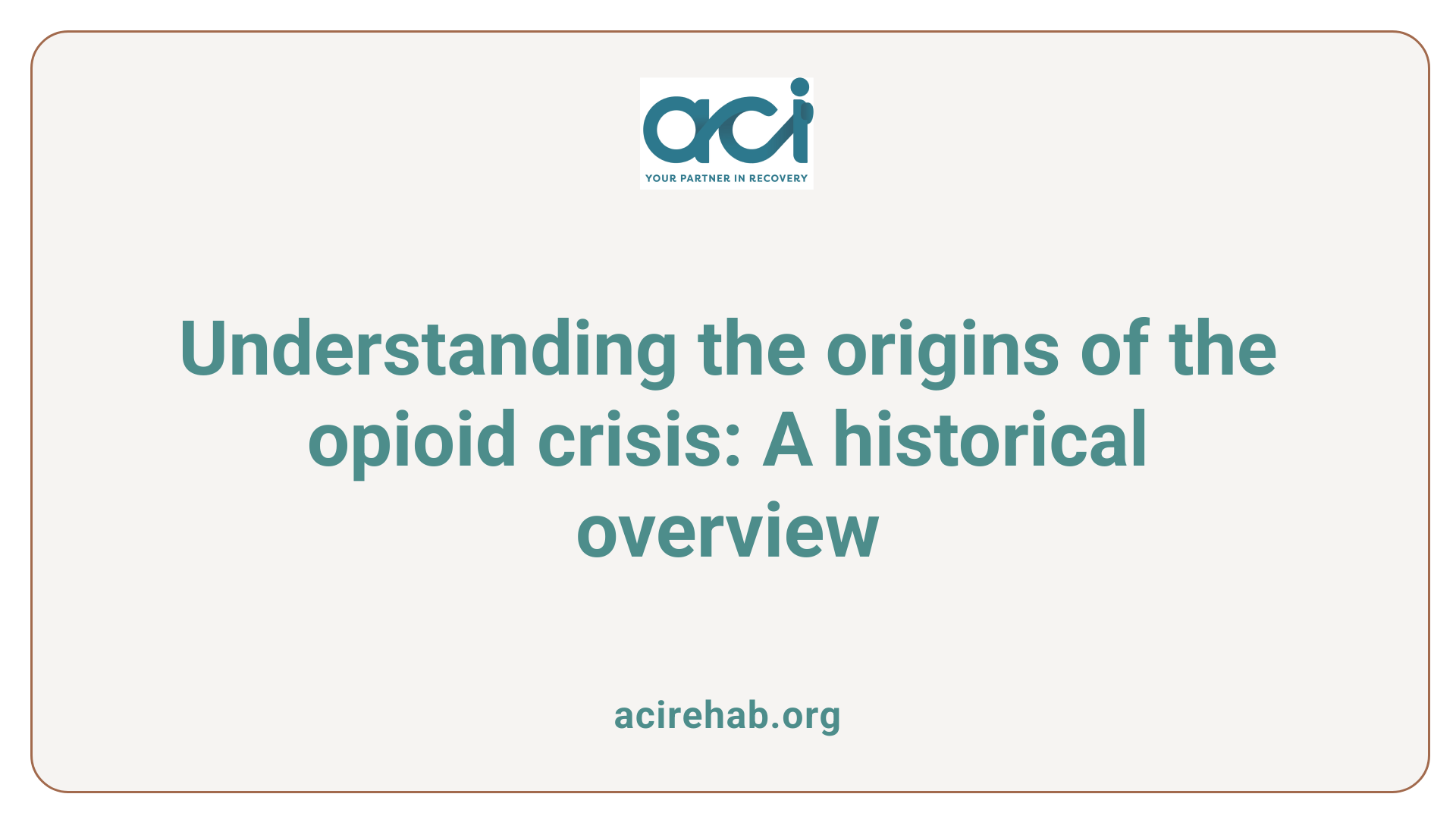
How did the opioid epidemic start?
The opioid epidemic began in the late 1990s due to a significant increase in the availability and prescription of opioid painkillers. Healthcare providers started prescribing natural and semi-synthetic opioids for non-cancer-related and chronic pain, often downplaying the addiction risks. This practice led to growing addiction rates and the emergence of Opioid Use Disorder (OUD).
The progression of the crisis is marked by distinct waves:
- First Wave: Focused on prescription opioid misuse.
- Second Wave: Characterized by a rise in heroin use as individuals turned to cheaper alternatives due to tighter regulations on prescriptions.
- Third Wave: Notable for a surge in deaths from synthetic opioids, like fentanyl, commonly mixed with other street drugs.
These phases illustrate the evolving nature of the epidemic. The situation worsened with the COVID-19 pandemic, which intensified substance use disorders and contributed to higher overdose rates. By 2022, nearly 727,000 people had died from opioid overdoses since 1999, highlighting this ongoing public health crisis.
Unique challenges in the fourth wave
Today, the opioid crisis has entered its fourth wave, marked by the dangerous mixture of stimulants like cocaine and methamphetamines with fentanyl. This blending poses challenges as many stimulant users remain unaware of the presence of opioids in their drugs, further exacerbating the risk of overdose. The combination has become a leading cause of drug overdoses in the U.S., with studies showing a substantial increase in fatalities linked to these mixtures.
Efforts to combat the epidemic, including harm reduction strategies like fentanyl test strips, aim to mitigate the devastating impacts of this crisis on public health.
Persistent Crisis: The Current State of Opioids in America
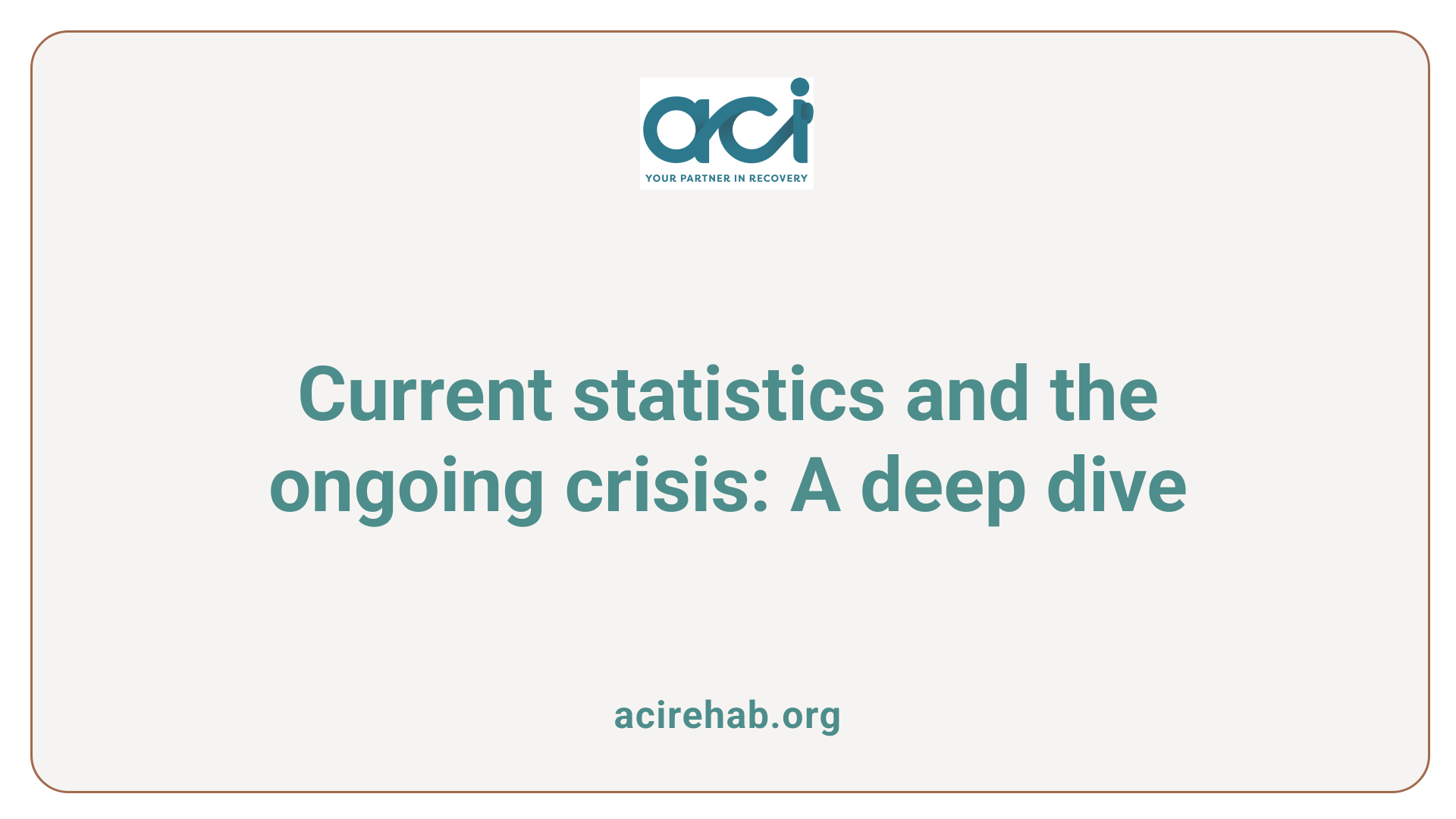
Is there still an opioid crisis in the USA?
Yes, there is still an opioid crisis in the USA. According to recent statistics, approximately 82,000 of the nearly 108,000 drug overdose deaths in 2022 involved opioids, emphasizing the ongoing severity of the epidemic. This marks a tenfold increase in opioid overdose death rates since 1999, although rates remained relatively stable from 2021 to 2022.
The Ongoing Severity of the Opioid Epidemic
The opioid crisis in the U.S. has evolved through three distinct waves:
- First Wave: 1990s – Increased prescription opioid use for chronic pain.
- Second Wave: Early 2010s – Rise in heroin use and overdose deaths.
- Third Wave: 2013 onwards – Surge in deaths involving synthetic opioids such as fentanyl, which is up to 50 times more potent than heroin.
The current challenges are exacerbated by the fourth wave, characterized by precarious mixtures of stimulants like cocaine with fentanyl, leading to increased overdose risks for unsuspecting users.
Current Statistics on Opioid Overdoses
Here’s a snapshot of the crisis’s recent impact:
| Year | Overdose Deaths (Opioids) | Total Overdose Deaths | % of Opioid-related Deaths |
|---|---|---|---|
| 2022 | 82,000 | 108,000 | 76% |
| 2016 | 63,000 | N/A | N/A |
The CDC continues to monitor overdose trends, promote public awareness campaigns, and provide resources aimed at preventing and addressing opioid misuse and its devastating consequences.
Tracing the Phases of the Epidemic
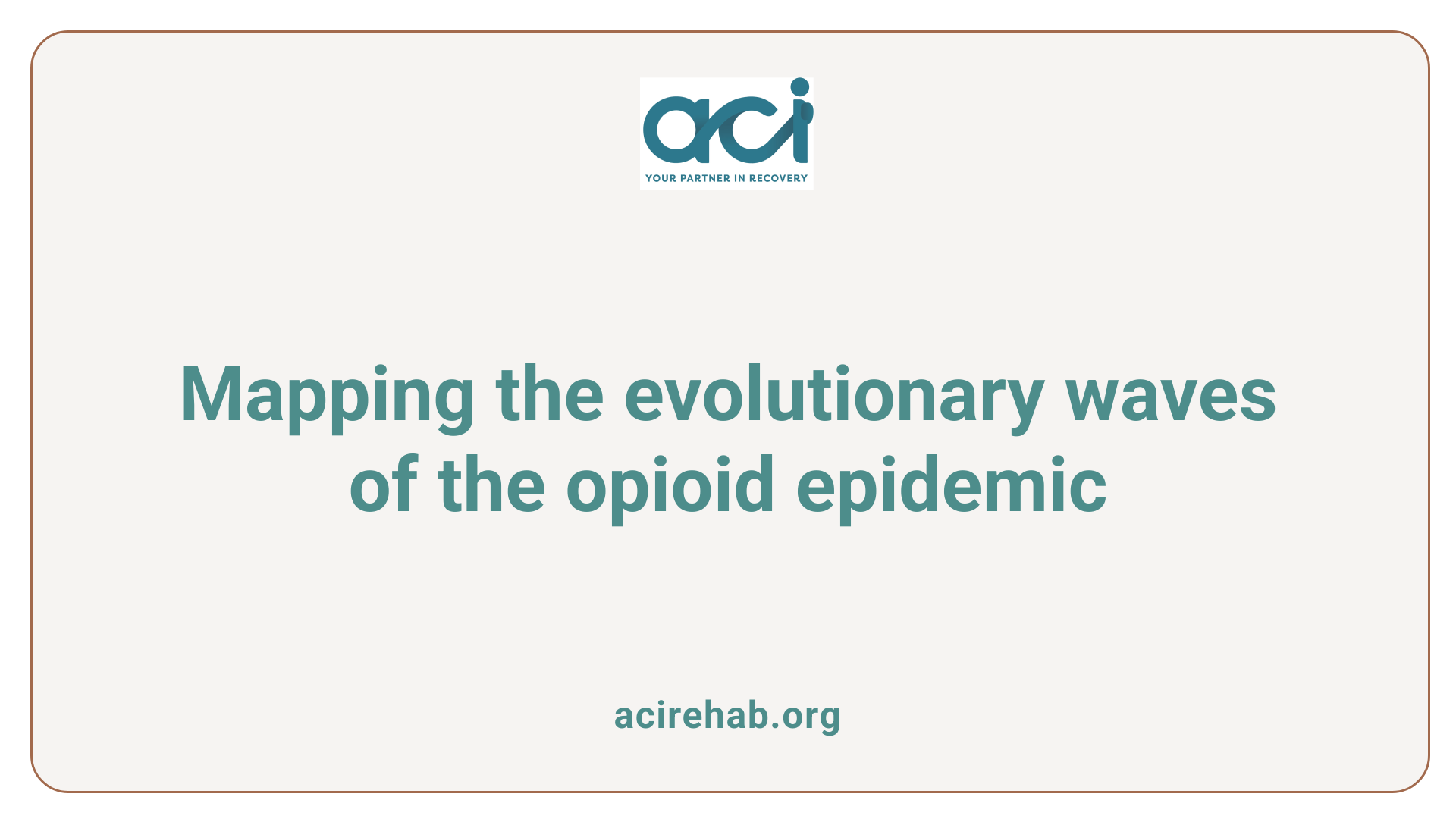
What are the phases of the opioid epidemic?
The opioid epidemic has progressed through three distinct waves:
-
First Phase (Late 1990s): This phase was marked by an increase in the prescription of opioid pain relievers. Medications like OxyContin were widely prescribed, leading to an escalation in misuse and dependence among patients and the general population.
-
Second Phase (Early 2010s): With the recognition of the dangers of prescription opioids, many individuals turned to heroin as a cheaper and more accessible alternative. This shift led to a significant rise in heroin use and related overdoses, drawing attention to a concerning trend in substance abuse.
-
Third Phase (2013 Onwards): The most alarming development has been the surge in synthetic opioids, with fentanyl at the forefront. This powerful substance, often mixed with other drugs unbeknownst to users, has drastically increased overdose deaths. Fentanyl’s potency—up to 50 times stronger than heroin—has made this phase particularly deadly.
Impact of each phase
The repercussions of each phase are far-reaching:
- First Phase: The onset of opioid prescriptions flooded the market, leading to widespread addiction and setting the stage for future substance misuse problems.
- Second Phase: With the rise in heroin usage came a spike in new health crises, including increased viral infections and further social stigmatization of addiction.
- Third Phase: Today, synthetic opioids dominate the landscape of overdose deaths. Studies indicate that combinations of stimulants and fentanyl are now the leading cause of these fatalities, complicating prevention efforts since many stimulant users aren’t aware of potentially lethal opioid contamination in their drugs.
This progression demonstrates not only the evolution of substance use patterns but also highlights the need for comprehensive public health responses to address the complex layers of the opioid crisis.
Evolution of Substance Use Trends
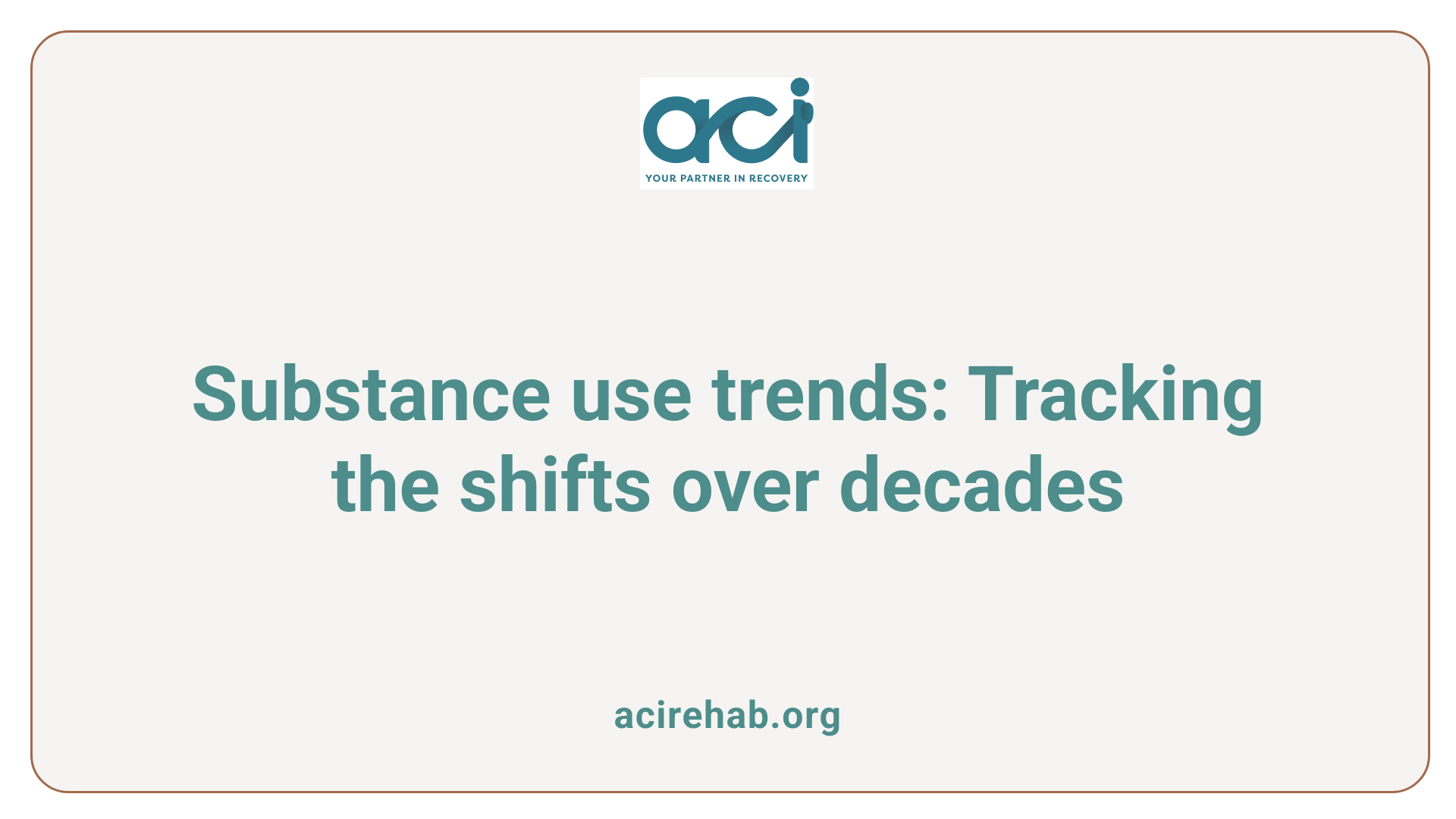
How has the opioid epidemic evolved in terms of substance use trends?
The opioid epidemic has dramatically changed in the last two decades, characterized by three distinct waves of substance use. The initial wave began in the 1990s, fueled by the over-prescription of opioid medications like OxyContin. This period led to a troubling increase in overdose deaths associated with these painkillers, creating a foundation for addiction that many users found challenging to overcome.
As the epidemic progressed into the second wave around 2010, we witnessed a significant rise in heroin use. Many individuals who initially misused prescription opioids began turning to heroin as a cheaper and more accessible alternative. About 80% of current heroin users report having previously misused prescription painkillers, highlighting a concerning pathway from legitimate prescriptions to illicit drug use.
By 2013, the crisis entered its third wave with a staggering rise in deaths related to synthetic opioids, particularly fentanyl. This potent drug, often mixed with other substances like cocaine and methamphetamines, has become the leading cause of overdose deaths, accounting for about 75% of all overdose fatalities in places like Rhode Island in 2022. These evolving trends reinforce the complexity of the opioid epidemic, necessitating multifaceted public health strategies to address the intertwined issues of addiction and the dangerous mixing of drugs.
Recent Shifts in Substance Use
Emerging data indicates that the current landscape of substance use is further complicated by an alarming trend—the mixing of stimulants with opioids. Many users of stimulants such as cocaine and methamphetamines may be unknowingly exposed to fentanyl, significantly increasing their risk of overdose. Studies show that stimulant mixtures with fentanyl now account for the majority of fentanyl-related overdoses nationwide. This alarming trend is partially driven by a lack of awareness among users, making it crucial for education on the risks involved in mixing substances.
This summary of evolving substance use patterns highlights not only the scale but also the shifting nature of the opioid crisis. Vigilant public health interventions are essential to address the challenges posed by this expanding epidemic.
Societal Implications and Demographic Shifts
Impact on Different Demographics
The opioid epidemic has spared no demographic group, affecting individuals from all backgrounds. However, communities of color have faced particularly high rates of overdose and fatalities compared to white Americans. This discrepancy highlights systemic inequalities in healthcare access and treatment. Additionally, the rise of heroin use has seen a demographic shift, transitioning from predominantly urban, minority groups to a wider range that includes young, non-Hispanic whites, reflecting the epidemic’s reach into formerly less affected communities.
Societal Effects of the Epidemic
The societal effects of the opioid epidemic are profound, with opioid-related deaths claiming more American lives annually than deaths in several major wars. This statistic emphasizes the grave public health crisis at hand. Families are disrupted, community structures are weakened, and the economic burden is heavy as municipalities deal with the fallout. Furthermore, the COVID-19 pandemic exacerbated the crisis, increasing isolation and contributing to a rise in substance use disorder, underscoring the fragility of mental health and the importance of addressing these issues holistically.
| Demographic Group | Impact | Comments |
|---|---|---|
| Communities of Color | Disproportionate rates of overdose and fatalities | Highlights systemic inequalities. |
| Young Adults | Increased rates of substance use disorders | Often linked to prescription drug accessibility. |
| Predominantly White Areas | Emerging heroin use increases awareness of the epidemic | Shift in public perception and political responsiveness. |
The opioid crisis not only transforms individual lives but also reshapes communities and societal frameworks at large.
Personal Narratives and the Human Impact
Personal Stories of Addiction
The opioid epidemic’s grip spans diverse lives, as illustrated by personal accounts from individuals like Kristina Block and Johnny Bousquet. Their stories reveal the disheartening journey from prescription drug use to heroin addiction, capturing the despair and challenges faced by those ensnared in this crisis. Their experiences underscore a tragic reality where addiction may begin with a legitimate need for pain management, only to devolve into a reliance on substances that threaten their well-being.
Impact on Individuals and Families
The implications of addiction stretch beyond the users themselves, significantly affecting families and communities. Loved ones often bear the emotional strain as they witness the declining health and lost trajectories of those addicted. Families report feelings of hopelessness, anger, and deep concern, struggling with the societal stigma of drug use and the profound loss that can stem from overdose. This epidemic does not discriminate; it impacts affluent neighborhoods and marginalized communities equally, driving home the message that addiction and its consequences are universal issues that require compassionate responses and effective treatment.
| Story | Individual | Impact |
|---|---|---|
| Transition to Heroin | Kristina Block | Loss of family support |
| Struggles with Addiction | Johnny Bousquet | Cycle of despair for family |
| Overall Impact | Various individuals | Emotional strain on families |
These narratives are crucial in understanding the broader social and emotional contexts of the opioid crisis, emphasizing the urgent need for comprehensive strategies that prioritize treatment and recovery.
Public Health Responses and Community Support
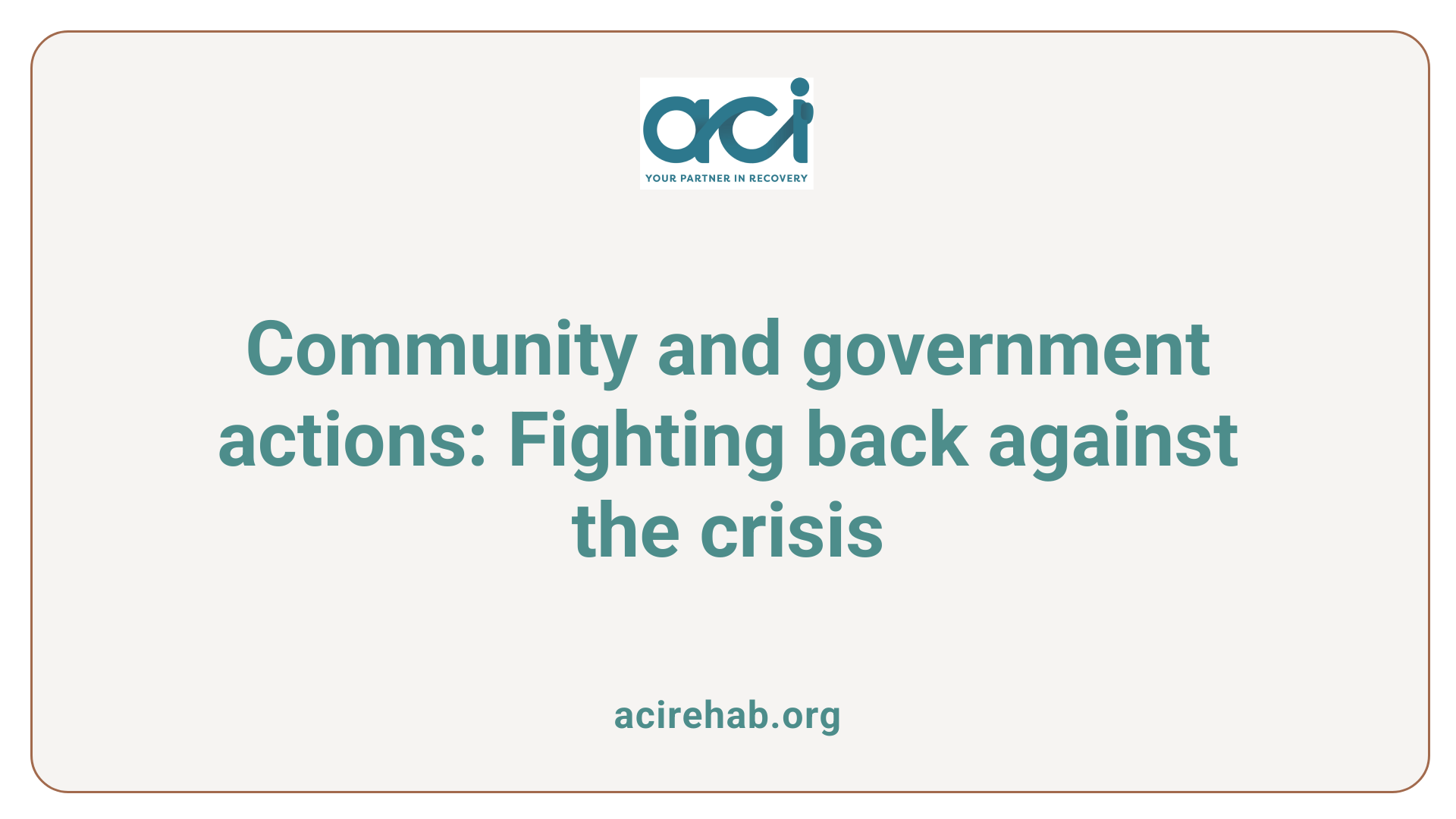
Government and Community Response
The opioid epidemic has prompted a multifaceted response from both government agencies and community organizations. Federal efforts focus on four main pillars: prevention, harm reduction, treatment, and recovery. The aim is to address the complex nature of addiction and its ripple effects on society. In states like Massachusetts, the Attorney General’s office collaborates with law enforcement and health experts to create resources dedicated to combating the crisis. Notably, a trust fund was established to support prevention and recovery efforts, providing financial resources to tackle the epidemic effectively.
Public Health Strategies
Public health responses have integrated innovative approaches to manage the crisis. A notable example is the expansion of telemedicine, which has improved access to treatment for those struggling with opioid use disorder, especially during the COVID-19 pandemic. Additionally, harm reduction strategies such as distributing fentanyl test strips have become vital tools in preventing overdoses, allowing users to check the safety of their drugs. Moreover, community awareness initiatives aim to educate stimulant users about the risks of opioid contamination, helping to bridge the knowledge gap and potentially reduce overdose fatalities.
| Public Health Strategy | Description | Impact |
|---|---|---|
| Trust Fund Establishment | Financial resources for prevention and recovery | Increased support and outreach |
| Telemedicine Expansion | Remote treatment for opioid use disorder | Improved accessibility to care |
| Fentanyl Test Strips | Tool for users to check drugs for fentanyl | Reduction in overdose deaths |
| Community Education | Initiatives to inform about risks of opioids | Greater awareness and prevention |
The Role of Legislation and Policy Changes
Relevant laws and measures
In response to the opioid epidemic, lawmakers at both federal and state levels have implemented various measures designed to combat this growing crisis. Key legislative actions include the creation of a trust fund in Massachusetts aimed at funding prevention, harm reduction, treatment, and recovery efforts following the opioid crisis. This fund was established with the active participation of the state legislature and marks a significant effort to allocate resources effectively. Additionally, the response has included lawsuits against major pharmaceutical companies, with notable actions highlighted by AG Healey against the Sackler family and Purdue Pharma for their role in perpetuating opioid misuse.
Impact of legislative actions
The impact of these legislative efforts is multifaceted. For instance, claims resolved against large drug distributors are projected to provide hundreds of millions of dollars for addressing the crisis in Massachusetts alone. Meanwhile, opioid intervention courts in states like New York exemplify a shift from punitive measures to more health-focused responses for nonviolent drug offenders, facilitating faster access to treatment. These legislative approaches signify a growing recognition of addiction as a public health issue rather than merely a criminal one. Such changes are crucial to addressing the complexities of addiction and improving access to treatment for individuals grappling with opioid use disorder.
Treatment Options and Medical Interventions
Available treatment methodologies
Effective treatment for opioid use disorder (OUD) involves a combination of behavioral therapies and medications. Some of the most common medications utilized include:
- Methadone: A long-acting opioid that helps reduce withdrawal symptoms and cravings. It is often administered in specialized clinics.
- Buprenorphine: A partial opioid agonist that helps alleviate withdrawal symptoms while reducing cravings. It can be prescribed by certified doctors, making it more accessible.
- Naltrexone: An opioid antagonist that blocks the euphoric effects of opioids and is offered in oral and injectable forms.
Innovations in opioid use disorder management
Recent shifts in treatment approaches highlight the integration of telemedicine in OUD management. This innovation has expanded access to care, especially during the COVID-19 pandemic, as many individuals faced barriers in accessing traditional in-person treatment facilities.
Research emphasizes the importance of building comprehensive treatment infrastructures, advocating for community-based solutions, and integrating harm reduction strategies. This includes programs offering fentanyl test strips, allowing users to test their drugs for the presence of fentanyl to prevent potential overdoses.
Moreover, states are increasingly implementing initiatives that focus on recovery and long-term support, fostering a shift from punitive approaches toward recovery-oriented systems of care. These multifaceted strategies are crucial for effectively addressing the opioid epidemic, particularly as the crisis evolves into its fourth wave.
Comparative Study: Global Approaches to Drug Use
Comparison of international strategies
Different countries have approached drug use and addiction in various ways, often leading to significantly different outcomes. For instance, Portugal decriminalized all personal drug use in 2001. This move aimed to treat addiction as a public health issue rather than a criminal one. The result was a dramatic decrease in the number of heroin users, which dropped from approximately 100,000 to around 25,000 by 2017.
In contrast, many U.S. states have maintained punitive measures against drug use. New York, for example, has started implementing opioid intervention courts, focusing on treatment rather than incarceration for nonviolent offenders.
Effectiveness of decriminalization and harm reduction
Decriminalization combined with harm reduction strategies has shown substantial success. Portugal’s approach included clean needle programs and safe injection sites, which significantly reduced drug-related deaths and HIV infections by over 90%
Meanwhile, U.S. efforts like the advocacy for fentanyl test strips signify a potential shift towards more compassionate and preventive measures. Yet, despite these steps, many U.S. communities continue to face the devastating impacts of the opioid crisis, highlighting the need for comprehensive strategies to effectively manage drug use and addiction on a global scale.
The Intersection with the COVID-19 Pandemic
Effects of COVID-19 on the Opioid Crisis
The COVID-19 pandemic has had a profound impact on the ongoing opioid crisis, exacerbating already alarming overdose rates. Fatalities due to overdoses surged, with over 93,000 reported deaths in just one year, marking the highest annual increase in nearly five decades according to the CDC. Contributing factors include increased stress, social isolation, and disrupted access to treatment services, which led to a spike in substance use disorders among vulnerable populations.
Changes During the Pandemic
The pandemic altered drug supply chains and user behaviors significantly. Users often turned to new dealers or unfamiliar substances, raising risks associated with overdose. Reports suggested that around 1,000% increases in overdose cases were observed in some emergency departments. Notably, the mixing of stimulants like methamphetamines with fentanyl became more frequent, leaving many stimulant users unaware of the hidden risks posed by opioids in their drugs.
| Impact Area | Details | Statistics |
|---|---|---|
| Overdose Deaths | Sharp increase in opioid-related deaths | 93,000 deaths in one year |
| Access to Treatment | Limited access due to facility closures | 1,000% increase in overdoses |
| User Behavior | Shift to new dealers and substances | Increased stimulant-fentanyl mixes |
| Mental Health Effects | Heightened stress and isolation stirred substance use | Numerous reports of resurgence |
This unprecedented public health challenge highlights the interconnectivity of mental health and substance use, demanding a comprehensive approach to treatment and prevention.
Technological Interventions: The Rise of Telemedicine
Role of Telemedicine in Treatment
Telemedicine has emerged as a vital resource in addressing the opioid epidemic, particularly during and after the COVID-19 pandemic. The shift to remote consultations helped overcome barriers that many individuals face when seeking treatment for substance use disorders, including transportation issues and stigma.
The ability to connect with healthcare professionals via video calls has significantly improved access to care. This means that those struggling with opioid use disorder (OUD) can more readily receive medication-assisted treatment (MAT) like methadone and buprenorphine, which are essential for managing withdrawal symptoms and facilitating recovery.
Telehealth Advancements
As healthcare facilities grappled with the need for social distancing, telehealth gained traction, leading to an expansion in its use for substance abuse treatment. Innovations such as online support groups and mobile health apps have emerged, making support more accessible than ever.
For instance, telemedicine allows users to receive counseling and follow-up care from the comfort of their homes. This is particularly beneficial for individuals who have faced challenges in traditional healthcare settings or for those living in rural areas with limited access to specialized services.
Overall, the adoption of telemedicine represents a transformative step in how addiction treatment is delivered, fostering a more inclusive approach that meets individuals where they are in their recovery journey.
Ideating Future Solutions and Research Directions
Ongoing Research and Proposed Solutions
Research on the opioid epidemic continues to evolve as scientists and health officials seek effective methods to mitigate the crisis. Current efforts focus on the long-term implications of prescription drug marketing, the trends of heroin use, and the recent emergence of mixed drug use featuring fentanyl. This ongoing research explores not only the biological mechanisms of addiction but also the socioeconomic factors contributing to dependency. Additionally, harm reduction strategies, such as the use of fentanyl test strips to prevent overdose, are gaining traction, emphasizing user education and awareness.
Future Direction for Epidemic Control
Future solutions for controlling the opioid epidemic must integrate a multifaceted approach. This includes expanding access to treatment for opioid use disorder through telemedicine and enhancing support systems that connect users with healthcare services. Advocacy for compassionate treatment over punitive measures is essential, particularly in light of evolving demographics in addiction. Moreover, revisiting prescription practices and adopting alternative pain management methods can contribute to reducing dependency on opioids. Investment in research and education will also play a critical role in crafting targeted interventions, potentially reshaping community responses to addiction and fostering a supportive environment for recovery.
External Factors and the Fourth Wave of the Crisis
Impact of drug mixing
The opioid epidemic has entered a perilous fourth wave, marked by the dangerous combination of stimulants like cocaine and methamphetamines with opioids, particularly fentanyl. This mixing has been shown to account for the majority of fentanyl-related overdoses nationwide. As a result, users of stimulants may unknowingly consume opioids, leading to a surge in overdose deaths. For instance, in Rhode Island, nearly 80% of overdose fatalities in 2022 were linked to fentanyl. The severe consequences of this blending exemplify the critical intersection between different substances and the ongoing public health crisis.
Current challenges in the fourth wave
One of the primary challenges of the fourth wave is the widespread lack of awareness among stimulant users regarding the presence of fentanyl in their drugs. This misjudgment prevents individuals from taking necessary precautions against overdose. Additionally, variations in the potency of illicit fentanyl complicate the risks, creating a landscape where users face unpredictable dangers.
Public health measures like fentanyl test strips are crucial as they empower users to identify the presence of fentanyl in their supply. However, these strategies can only be effective if users understand their risk levels. As the epidemic continues to evolve, addressing the complexities of this fourth wave will require enhanced education, targeted prevention efforts, and innovative harm reduction strategies.
Conclusion
The heroin epidemic is a complex crisis that demands a multifaceted response, ranging from legislative reforms to public health strategies and community engagement. By understanding its historical progression and embracing innovative treatment options, there is hope for mitigating the crisis and saving lives. The epidemic’s evolution continues to challenge society, but collaborative and compassionate approaches offer a pathway toward resolution and recovery.
References
- Stimulant users caught up in fatal ‘fourth wave’ of opioid epidemic
- Countering the Opioid Crisis: Time to Act Podcast
- Dose of Reality: Get the Facts on Opioids | Wisconsin Department of …
- Fighting the Opioid Crisis | Mass.gov
- Trends in Opioid Use, Harms, and Treatment – NCBI
- Chasing the Dragon: The Life of an Opiate Addict – FBI
- What Should the US Learn From New York’s and Portugal’s …

